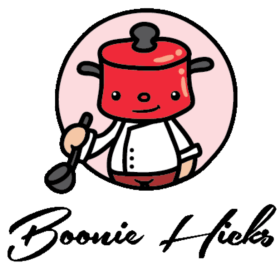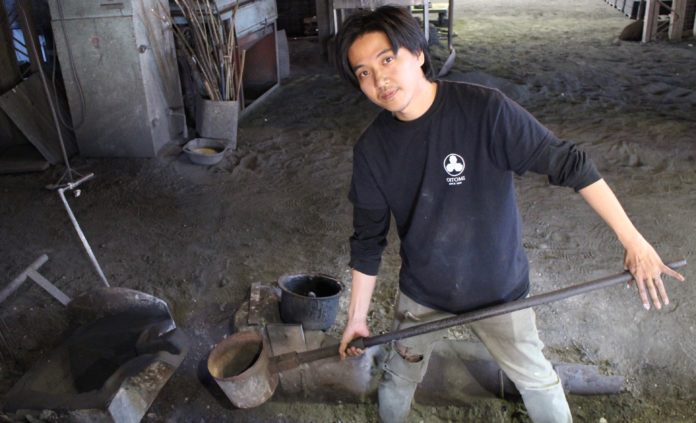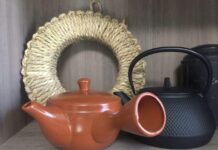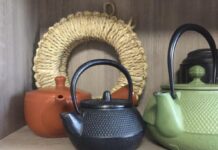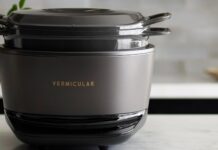Are you looking for an authentic Japanese teapot or kettle? Then, you may want to consider one made by Oitomi. Oitomi is one of the few companies that make their products in the famous region of Iwate. And that is available for purchase outside of Japan.
Table Of Contents
- Why buy Oitomi cast-iron
- Company information
- History of Oitomi
- How Oitomi makes their ironware
- Teapot vs. Tetsubin
- Oitomi products
- How to use an Oitomi teapot
- How to care for your teapot
- Conclusion
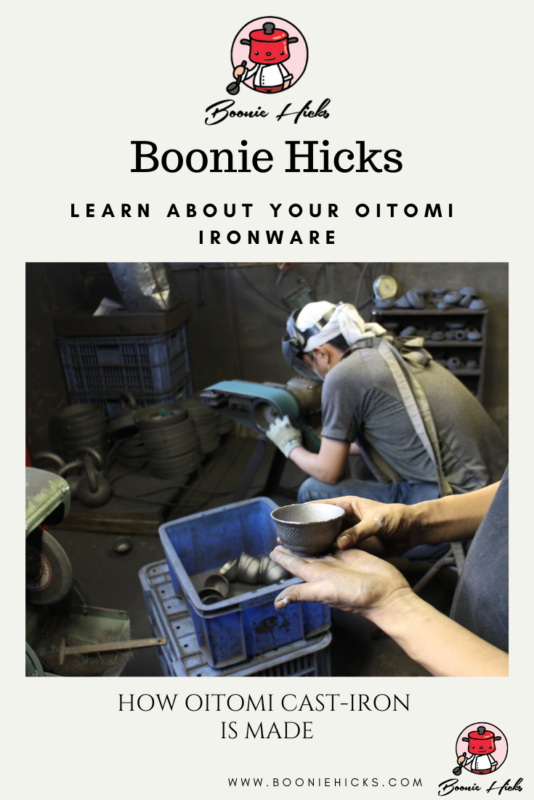
Why Buy Oitomi Ironware?
Here is why Oitomi is a good option if you are looking for a cast-iron teapot. The company is one of Japan’s oldest working cast iron foundries and has manufactured ironware since 1848. So, with over 150 years of experience, they have mastered the art of producing beautiful and useable ironware that will last for many years.
I was lucky to visit the family-run foundry during my stay in Iwate. Here is what I learned.
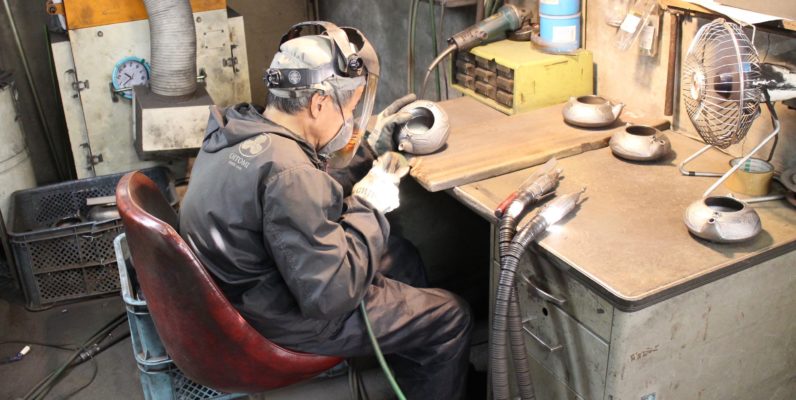
Oitomi Table Of information
| Origins | Oitomi makes their cast-iron products in the Iwate prefecture. Iwate is the cultural center for cast iron manufacturing in Japan, dating back over 900 years. |
| Founded | Oitomi was founded in 1848 by the Oikawa family that also established the nearby Oigen foundry. |
| Cast Iron Foundry Headquarters | 57 Mizusawaku Hadacho Oshu, Iwate 023-0105 Japan Google maps |
| Type Of Casting | Oitomi uses the popular and accurate method of sand casting to make their products (Wiki). |
| Iron Source | Iron is sourced from different countries and is processed and refined in Japan. Oitomi also recycles iron onsite, sourced from within Japan, such as building and bridge girders. Products that do not meet the company’s quality control are recycled. |
| Distribution | Oitomi does not have retail stores. Instead, they focus on forming strong partnerships with retailers of all sizes. Here is a link to their website if you are interested: https://oitomi.jp (non-affiliate link). |
| Interior fFnishing | Your Oitomi cast iron will have one of three interior finishes: 1. Raw or bare cast iron (uncoated), usually for tetsubin kettles 2. Enameled interior for teapots 3. Polymerized oil used on cookware and on kettles (designed for those who are concerned with rust and are unfamiliar with using a traditional Japanese kettle) |
| Exterior Finishing | Your Oitomi cast iron will have one of two exterior finishes: 1. Urushi: which is the traditional and iconic Japanese lacquer finish 2. Polymerized oil: which has a natural matte black finish |
| Products | Oitomi makes a variety of products hand-poured into molds. These include teapots, kettles, wind chimes, and cookware. Oitomi also partners with different industries to manufacture cast iron. |
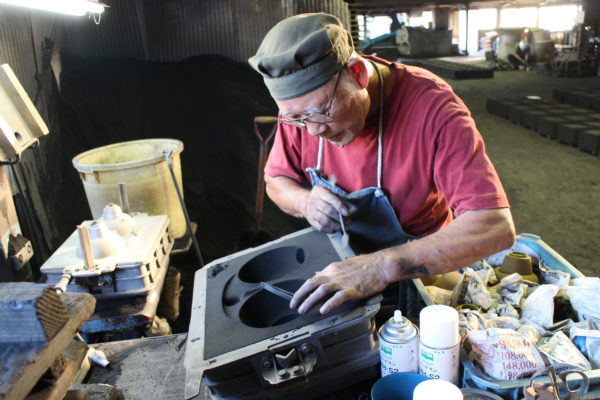
Background And History Of Oitomi
The history of Oitomi dates back to 1848, and makes ironware in Oshu, in the Iwate region of Japan. The company is one of the oldest workshops in the Southern Iwate Prefecture. And they are famous for their cast iron kettles and teapots. However, Oitomi also makes a variety of cookware and wind chimes.
Because the company makes its ironware in Iwate, it can be called Nanbu Tekki. If you want to learn more about Nanbu Tekki, here is an interesting in-house article.
For over 170 years, Oitomi has remained in the Oikawa family’s capable hands, which also operates the sister company called Oigen. And you can click the link if you want to see more beautiful kettles.
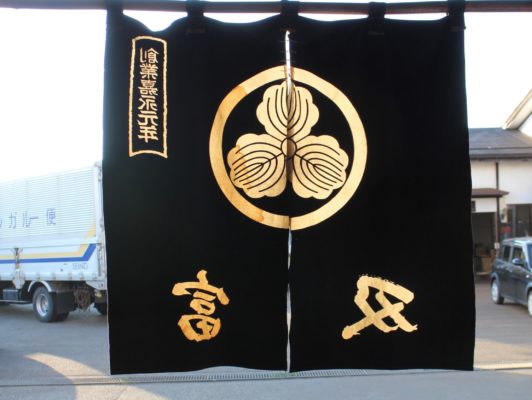
However, both companies focus on manufacturing quality products, much of which is by hand. This hands-on approach is one of the reasons Oitomi is a trusted brand and recognized for its high-quality cast-iron products.
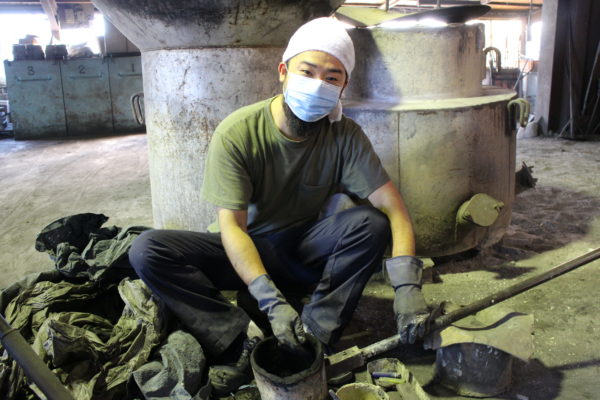
Traditional And Modern Teapots And Kettles
Although, I prefer the look of a traditional cast iron teapot. Oitomi makes traditional-styled teapots and a new product range that is brightly colored and catered towards overseas markets.
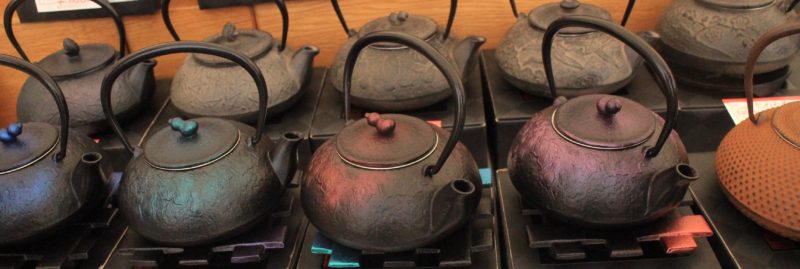
Their in-house designer can make a bespoke set of molds within two to three months. Potential clients can also choose from over 2,000 molds. From design to manufacture, it is all done onsite and finished to the requested specifications. This level of customer service could be one of the reasons why Oitomi has been in business for over 170 years.
How Do Oitomi Make Their Cast Iron Teapots And Kettles?
| Materials | As you enter the foundry, you see the essential materials to make cast iron, such as hard-coking coal and iron. |
Making Sand Molds | Oitomi uses the method of sand casting instead of traditional clay molding. So, you can buy a kettle or teapot at a lower price than one made with clay molds. But do not be fooled into thinking the process is automated. Special sand is boxed and then hauled into a pressing machine by hand. One box at a time. |
| Making Ironware | Even with established Japanese companies like Oitomi, your ironware resembles smaller bespoke Iron is hand-poured into every mold. For this reason, I would choose Japanese cast iron over low-cost manufacturers. |
| Quality Control | Foundry staff thoroughly inspect even the smallest ironware to check for imperfections. And smooth and round any rough edges. |
| Rust Prevention | Otomi staff places cast iron products in a kiln ready for rust-proofing. This attention to detail separates Nambu Tekki from other ironware. Reheating ironware to high temperatures changes the iron surface from standard Fe3+ to Fe2+. Not only is this a vast improvement in preventing rust, but Fe2+ may also have added health benefits. If you want to learn more, you may find my article, Is cast iron safe useful. |
| Enameling, Lacquer, And Oiling | Finally, Oitomi cast-iron products get either a lacquer finish or an oil finish on the exterior. Then, the teapots receive an enamel lining before their final rust-prevention coating. A traditional high gloss lacquer, Urushi, or oil, is polymerized onto the iron. Similarly, to way, you may season your pan at home. |
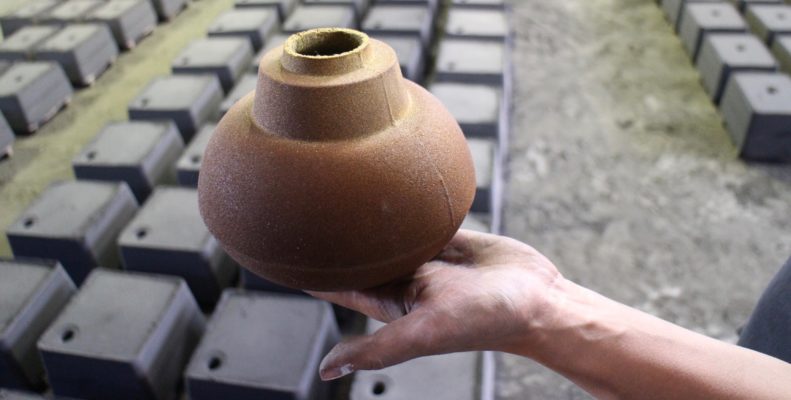
Tetsubins vs. Cast Iron Teapots
A lot of people use the terms tea kettle and teapot interchangeably. But, when it comes to Japanese cast iron, these two are different.
- A Japanese cast iron tea kettle is also called a tetsubin. You use a kettle to boil water for tea.
- On the other hand, use a cast iron teapot for steeping tea. That is because cast iron teapots have an enamel lining on the inside, making them unsuitable for stovetop use. Extreme heat will crack the enamel. It is necessary to know the differences between these two when choosing a cast iron teapot or kettle.
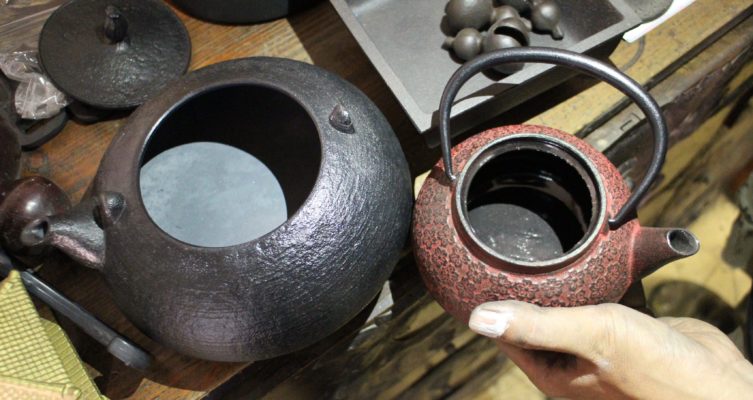
Ask Your Teashop Or Department Store For Oitomi.
Oitomi makes several teapots and kettles. And are widely available in Japan. However, your local teashop or department store might stock Oitomi products, so be sure to ask and look for their logo of three oak leaves in a circle.
They also sell online. Here are a few online products available at the time of writing.
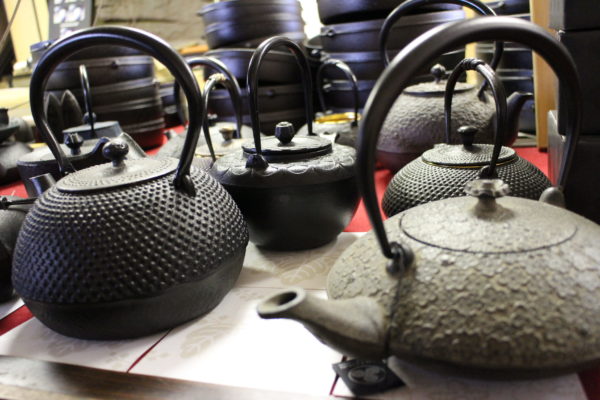
Nanbu Tetsubin – Cast Iron Kettle.
This kettle is for boiling tea water, so that you can use it on modern stovetops. The Nanbu Tetsubin (non-affiliated link) features a timeless design called Itome. The Itome pattern is a classic straight line. This tetsubin holds about 40 ounces of fluid, which is enough for tea service for four.
This kettle will naturally form a patina on the inside with use. The patina is a natural oxidation product that helps prevent rust and add iron to the water.
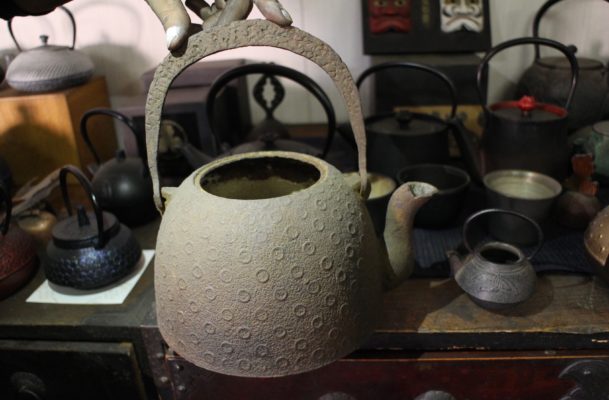
Oitomi Cast Iron Tea Kettles and Teapots – Use & Care
Oitomi’s cast iron products can conceivably last for decades with proper care. So, you won’t have to worry about replacing them if you follow the care instructions. So, it is necessary to read any instructions with your teapot or kettle to ensure longevity.
- Guide to cast-iron teapots.
- Guide to cast-iron kettles (tetsubins)
- How to make tea in a cast iron teapot
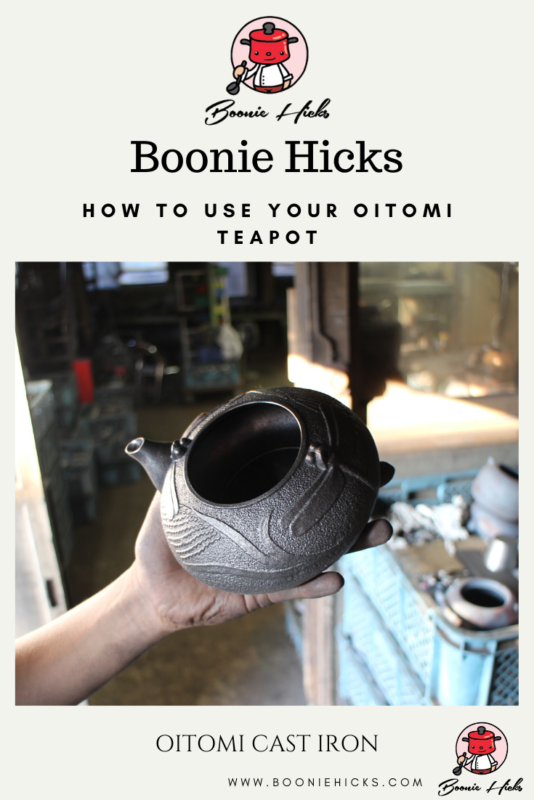
If you have a cast iron teapot or kettle, I’ve written a couple of guides that you could find interesting. However, for a quick look, see the instructions below.
How To Use An Oitomi Cast Iron Teapot
| Before The First Use | Let boiling water sit in your teapot for 10 minutes. Tip out and repeat. Doin this removes odors that may be due to the manufacturing process. If you’d like, you can add ginger to the hot water. Ginger also helps remove any odor. If your teapot has an enamel lining, wiping it out with a soft sponge is okay. |
| Select Your Favorite Tea | Since enamel is nonporous and easily washable, you can mix and match your favorite teas. But if you don’t wash the inside of your teapot after use, it’s best to use similar teas. |
| Preheat Your Teapot | Unless you are using an Oitomi Cast Iron Tetsubin, you will need to boil water separately. If the teapot has an enamel lining on the interior, you cannot boil water in it. While the water is boiling, warm the teapot by pouring hot water a few times. Let the water sit for a minute, and then pour it out. After that, your teapot is dust-free and ready to go. |
| Brew your tea | Check the packet of tea for brewing times, and enjoy. |
AFTER BREWING, REMOVE THE INFUSER; OTHERWISE, YOUR TEA WILL OVER-EXTRACT AND BECOME BITTER.
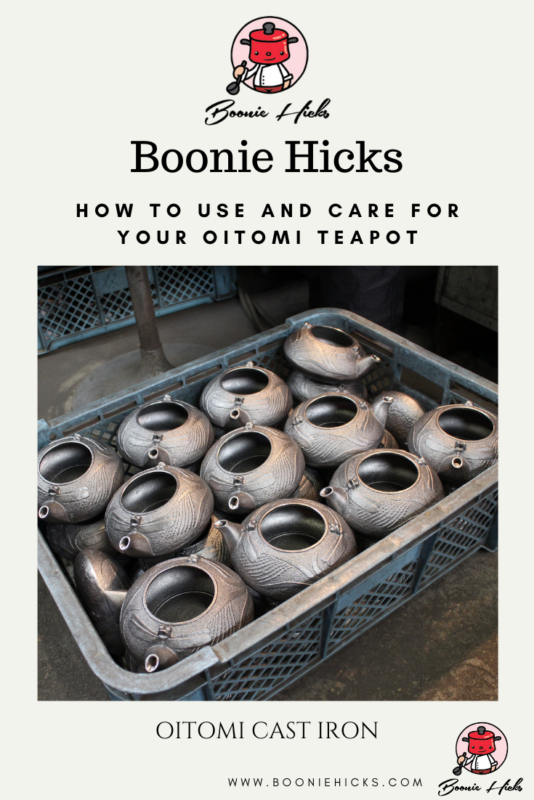
How To Clean Your Oitomi Cast Iron Teapots And Kettles.
I’m a cast iron enthusiast, not a tea expert, so remember to read the instructions for correct use. However, just like other cast iron teapots and kettles, Oitomi’s ironware requires a little care to maintain its durability.
It is easy to care for cast iron teapots and kettles. Just by using your kettle, you are helping to care for it. Regular use helps build a calcium layer inside a bare iron cast-iron kettle. This layer helps prevent rust, and an actively used kettle will develop its unique characteristics.
Here Are Some Simple Care Steps To Follow For Your Teapot
Each Time After Brewing Tea:
- Empty and rinse out the infuser basket before the tea leaves dry out
- Make sure you rinse out the teapot
- Avoid using harsh detergents or cleaners (never use a dishwasher)
- If the teapot is cold, use warm water, not hot, to prevent enamel from cracking
- Dry the pot with a soft cloth
- Turn the teapot upside down to dry completely
To keep the outside of a lacquered teapot looking shiny and new, soak a soft cloth in green tea. Wipe down the outside and then dry it thoroughly.
Final Thoughts
Oitomi cast iron products are some of Japan’s finest, with modern and traditional designs available. Oitomi sells ironware in small teashops to big retailers, so keep an eye out for them.
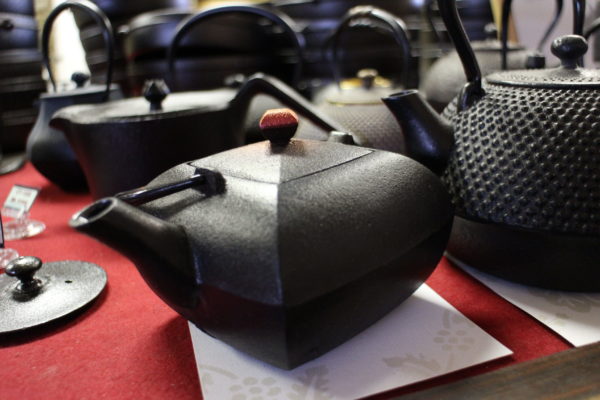
I hope you have found this article helpful. Here is a link to my Japanese cast iron page to learn about other Japanese foundries.

